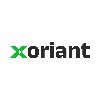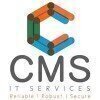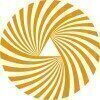Filter interviews by
Cerium Systems VLSI Design and Verification Engineer Interview Questions and Answers
10 Interview questions
A 4:1 mux can be implemented using two 2:1 muxes.
Connect the select line of both 2:1 muxes to the same select line of the 4:1 mux.
Connect the output of one 2:1 mux to the input of the other 2:1 mux.
Connect the inputs of both 2:1 muxes to the corresponding inputs of the 4:1 mux.
The output of the 4:1 mux is the output of the second 2:1 mux.
Blocking waits for a process to complete before moving to the next, while non-blocking allows for concurrent execution.
Blocking assignments use '=' operator, while non-blocking use '<=' operator.
Blocking assignments are executed sequentially, while non-blocking assignments are executed concurrently.
Blocking assignments are used for combinational logic, while non-blocking assignments are used for sequential logic.
E...
Tasks are concurrent and functions are sequential in execution.
Tasks can run concurrently and can communicate with each other using shared variables.
Functions are executed sequentially and return a value to the calling function.
Tasks can be used for parallel processing and can be scheduled by the operating system.
Functions are used for modular programming and can be called from other functions or tasks.
Example: A ...
Flip-flop conversion from DFF to JKFF
Determine the excitation table for JK flip-flop
Use the excitation table to derive the input equations for J and K
Replace D input with J and K inputs in DFF circuit
Verify the functionality of the converted JKFF circuit
Using 2:1 mux, implement inverter, AND gate, OR gate.
For inverter, connect one input to select line and other input to ground
For AND gate, connect one input to select line and other input to input signal, output is inverted
For OR gate, connect one input to select line and other input to input signal, output is not inverted
Use truth tables to verify functionality
1 NAND gate can be used to make 2 combinations of inverter.
A NAND gate can be used to make an inverter by connecting both inputs together.
The output of the NAND gate will be the inverted input.
Thus, there are 2 possible combinations of inverter using just 1 NAND gate.
Shift registers are sequential circuits that can store and shift data bits.
Shift registers are made up of flip-flops that store data bits.
Data can be shifted left or right through the register.
Shift registers can be used for serial-to-parallel or parallel-to-serial conversion.
Examples of shift registers include the Serial-in-Parallel-out (SIPO) and Parallel-in-Serial-out (PISO) registers.
Universal gates are logic gates that can be used to implement any Boolean function.
Universal gates are NAND and NOR gates.
They are called universal because they can be used to implement any Boolean function.
This is because NAND and NOR gates are functionally complete.
This means that any Boolean function can be expressed using only NAND or NOR gates.
Other gates like AND, OR, and NOT gates are not functionally compl...
Ring, Johnson, Sync and Async counters are types of digital counters used in electronics.
Ring counter is a circular shift register with only one flip-flop set to 1 at a time.
Johnson counter is a modified ring counter with complemented output of the last flip-flop fed back to the input.
Sync counters use a common clock signal for all flip-flops while Async counters use individual clock signals.
Examples of Sync count...
Verilog supports various data types including integer, real, reg, wire, and time.
Integer data type is used for whole numbers
Real data type is used for decimal numbers
Reg data type is used for sequential logic
Wire data type is used for combinational logic
Time data type is used for simulation time
Data types can be declared using keywords like 'integer', 'real', 'reg', 'wire', and 'time'
Data types can also be declare...
Cerium Systems VLSI Design and Verification Engineer Interview Experiences
1 interview found
I applied via LinkedIn and was interviewed before Apr 2022. There were 2 interview rounds.

(11 Questions)
- Q1. How many combinations of inverter can be made using just 1 nand gate
- Ans.
1 NAND gate can be used to make 2 combinations of inverter.
A NAND gate can be used to make an inverter by connecting both inputs together.
The output of the NAND gate will be the inverted input.
Thus, there are 2 possible combinations of inverter using just 1 NAND gate.
- Q2. Using 2:1 mux make inverter, AND Gate, OR Gate.
- Ans.
Using 2:1 mux, implement inverter, AND gate, OR gate.
For inverter, connect one input to select line and other input to ground
For AND gate, connect one input to select line and other input to input signal, output is inverted
For OR gate, connect one input to select line and other input to input signal, output is not inverted
Use truth tables to verify functionality
- Q3. 4:1 mux using 2:1 mux
- Ans.
A 4:1 mux can be implemented using two 2:1 muxes.
Connect the select line of both 2:1 muxes to the same select line of the 4:1 mux.
Connect the output of one 2:1 mux to the input of the other 2:1 mux.
Connect the inputs of both 2:1 muxes to the corresponding inputs of the 4:1 mux.
The output of the 4:1 mux is the output of the second 2:1 mux.
- Q4. What is ring counter, Jhonson counter, Sync and Async Counters.
- Ans.
Ring, Johnson, Sync and Async counters are types of digital counters used in electronics.
Ring counter is a circular shift register with only one flip-flop set to 1 at a time.
Johnson counter is a modified ring counter with complemented output of the last flip-flop fed back to the input.
Sync counters use a common clock signal for all flip-flops while Async counters use individual clock signals.
Examples of Sync counters a...
- Q5. Explain the working of Shift Registers
- Ans.
Shift registers are sequential circuits that can store and shift data bits.
Shift registers are made up of flip-flops that store data bits.
Data can be shifted left or right through the register.
Shift registers can be used for serial-to-parallel or parallel-to-serial conversion.
Examples of shift registers include the Serial-in-Parallel-out (SIPO) and Parallel-in-Serial-out (PISO) registers.
- Q6. Setup time and Hold Time
- Q7. Flip-Flop Conversion (DFF to JKFF more).
- Ans.
Flip-flop conversion from DFF to JKFF
Determine the excitation table for JK flip-flop
Use the excitation table to derive the input equations for J and K
Replace D input with J and K inputs in DFF circuit
Verify the functionality of the converted JKFF circuit
- Q8. Data Types in Verilog
- Ans.
Verilog supports various data types including integer, real, reg, wire, and time.
Integer data type is used for whole numbers
Real data type is used for decimal numbers
Reg data type is used for sequential logic
Wire data type is used for combinational logic
Time data type is used for simulation time
Data types can be declared using keywords like 'integer', 'real', 'reg', 'wire', and 'time'
Data types can also be declared wit...
- Q9. Difference between Task and Functions
- Ans.
Tasks are concurrent and functions are sequential in execution.
Tasks can run concurrently and can communicate with each other using shared variables.
Functions are executed sequentially and return a value to the calling function.
Tasks can be used for parallel processing and can be scheduled by the operating system.
Functions are used for modular programming and can be called from other functions or tasks.
Example: A task ...
- Q10. Difference between Bocking and Non-Blocking in Verilog
- Ans.
Blocking waits for a process to complete before moving to the next, while non-blocking allows for concurrent execution.
Blocking assignments use '=' operator, while non-blocking use '<=' operator.
Blocking assignments are executed sequentially, while non-blocking assignments are executed concurrently.
Blocking assignments are used for combinational logic, while non-blocking assignments are used for sequential logic.
Exampl...
- Q11. What do you mean by universal Gates?
- Ans.
Universal gates are logic gates that can be used to implement any Boolean function.
Universal gates are NAND and NOR gates.
They are called universal because they can be used to implement any Boolean function.
This is because NAND and NOR gates are functionally complete.
This means that any Boolean function can be expressed using only NAND or NOR gates.
Other gates like AND, OR, and NOT gates are not functionally complete.
F...
Interview Preparation Tips
- Digital Electronics
- Verilog
Skills evaluated in this interview
Top trending discussions







Interview questions from similar companies

I appeared for an interview in Sep 2017.
Interview Questionnaire
4 Questions
- Q1. Technical interview take by client technical person actually they are hiring for another client so they took total 3 technical round and final will HR round
- Q2. Asking about life cycle of Dot net mvc contols entity frame work and SQL queries
- Q3. Problem based on oops and SQL queries outputs
- Q4. Basic questions about my self ,salary discussion basic formalities form I have to fill up
Interview Preparation Tips
Experience: There were around 15 objective question that includes mvc, c#.net and SQL server. It was very simple question like different types of filters,Acton results in mvc. Basic oops concept and dot net web page regarding
Round: Resume Shortlist
Experience: After completing test round another was technical round discussed maily for mvc and SQL server questions. Around 30 mint discussion. After qualify this round another round will start from client technical staff.
General Tips: It was for 2-3 year experience person very simple to crack but focus on you which profile you are looking for study interview questions from net
Skills: Dot net mve oops concept jQuery and SQL server

I applied via Naukri.com and was interviewed before May 2018. There were 5 interview rounds.
Interview Questionnaire
4 Questions
- Q1. Telephonic technical
- Q2. Core Java related exception handling ,design pattern ,oops solid design principle, rest API, different annotations of spring and jpa
- Q3. Same questions on telephonic round but detailed elaborate and given simple problem statement we had to justify that why it's time n space complexity valid. Rest API questions hibernate orm use
- Q4. Manager round just to check whether you have actually worked on project or not stress testing performance questions scenario questions
Interview Preparation Tips
Skills: Core Java sevlet JSP hibernate spring rest API, Communication, Body Language, Problem Solving, Analytical Skills, Decision Making Skills
Duration: 1-4 weeks

I applied via Recruitment Consultant and was interviewed in May 2019. There were 3 interview rounds.
Interview Questionnaire
1 Question
- Q1. Technical questions & team leading
Interview Preparation Tips

I appeared for an interview in Sep 2019.
Interview Questionnaire
1 Question
- Q1. Pl sql related questions
Interview Preparation Tips
Laterly after I had lunch by 2pm Hr came n told me that Manager is not available now so we will be conducting ur further round in weekdays.
Then there was no mail or call so I purposely mailed them still haven't got proper response from them, so at last I told my friend who referd me to ask for an update the same HR told him that they want Immediate joiner so we can't process him to further round. Wasted my whole day over there

I applied via Recruitment Consultant and was interviewed before Jan 2020. There were 5 interview rounds.
Interview Questionnaire
1 Question
- Q1. What Prog Languages known? Prior Software Experience? How good on U.S. Client Face to Face and telephonic interaction for projects?
- Ans.
I am proficient in Java, Python, and C++. I have 2 years of experience in software development. I have excellent communication skills for client interaction.
Proficient in Java, Python, and C++
2 years of software development experience
Excellent communication skills for client interaction
Interview Preparation Tips

I applied via Walk-in and was interviewed before Jul 2021. There were 3 interview rounds.
Data structures and algorithms
Python etl,pandas, pyspark questions
(1 Question)
- Q1. Salary negotiation , work culture
Interview Preparation Tips

I applied via first naukari and was interviewed before Oct 2020. There were 4 interview rounds.
Interview Questionnaire
1 Question
- Q1. A graph is stored in sql database. Questions was to find the shorted path between point A and B.
- Ans.
To find the shortest path in a graph stored in SQL, use algorithms like Dijkstra's or A* with SQL queries for traversal.
Use Dijkstra's algorithm for weighted graphs to find the shortest path efficiently.
For unweighted graphs, consider using Breadth-First Search (BFS).
Store graph edges in a table with columns for source, destination, and weight.
Example SQL query: SELECT * FROM edges WHERE source = 'A' AND destination = ...
Interview Preparation Tips

Interview Questionnaire
2 Questions
- Q1. Basics from all framework you have worked on.
- Q2. There working all are non technical people's they don't know the projects here major people working in testing and non related work

I appeared for an interview before Nov 2020.
Interview Questionnaire
3 Questions
- Q1. Simple and Easy questions on OOPS, static variable, Prioriry queue,
- Q2. Design question,
- Q3. Binary Search
Interview Preparation Tips
Cerium Systems Interview FAQs
Some of the top questions asked at the Cerium Systems VLSI Design and Verification Engineer interview -
Tell us how to improve this page.
Cerium Systems Interviews By Designations
- Cerium Systems Associate Engineer Interview Questions
- Cerium Systems Engineer Interview Questions
- Cerium Systems Intern Interview Questions
- Cerium Systems Customer Service Assistant Interview Questions
- Cerium Systems Recruitment Consultant Interview Questions
- Cerium Systems Senior Engineer Interview Questions
- Cerium Systems Design & Verification Engineer Interview Questions
- Cerium Systems Physical Design Engineer Interview Questions
- Show more
Interview Questions for Popular Designations
- Software Engineer Interview Questions
- Senior Software Engineer Interview Questions
- Senior Engineer Interview Questions
- System Engineer Interview Questions
- Associate Software Engineer Interview Questions
- Project Engineer Interview Questions
- Technical Support Engineer Interview Questions
- Desktop Support Engineer Interview Questions
- Show more
Overall Interview Experience Rating
based on 1 interview experience
Difficulty level
Duration
Interview Questions from Similar Companies
Cerium Systems VLSI Design and Verification Engineer Reviews and Ratings
based on 2 reviews
Rating in categories
|
Associate Engineer
201
salaries
| ₹2.8 L/yr - ₹8.5 L/yr |
|
Design & Verification Engineer
93
salaries
| ₹3.1 L/yr - ₹10.6 L/yr |
|
Physical Design Engineer
90
salaries
| ₹3 L/yr - ₹9.8 L/yr |
|
Senior Engineer
62
salaries
| ₹9.1 L/yr - ₹31 L/yr |
|
Engineer
56
salaries
| ₹4.4 L/yr - ₹16.7 L/yr |

ITC Infotech

CMS IT Services

KocharTech

Xoriant
- Home >
- Interviews >
- Cerium Systems Interview Questions














